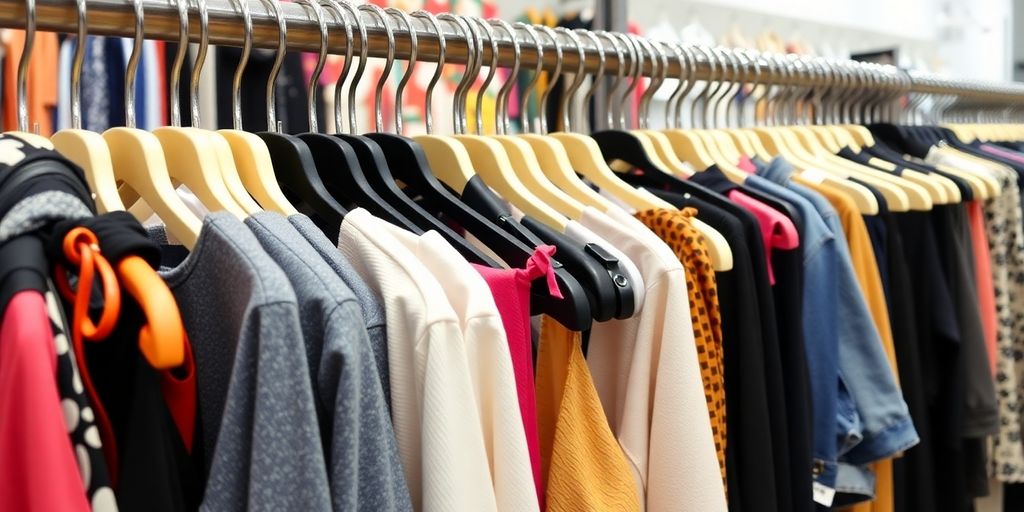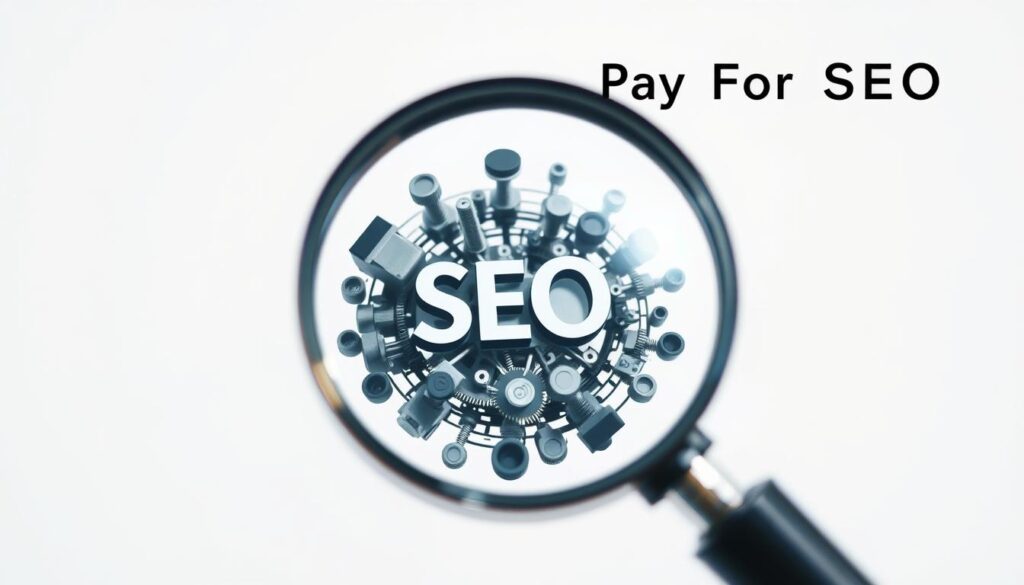In today’s bustling online market, standing out is key, especially for clothing stores. SEO, or Search Engine Optimization, is a game-changer for fashion retailers looking to boost their online presence. By tweaking your website’s content and structure, you can climb the search engine rankings and attract more eyeballs to your brand. But what exactly does SEO entail for clothing stores? Let’s dive into the essentials and see how you can make your store shine online.
Key Takeaways
- SEO helps clothing stores appear higher in search results, increasing brand visibility.
- Understanding your audience’s search intent is crucial for targeting the right keywords.
- Building trust online involves consistent search rankings and a user-friendly site.
- Effective SEO strategies include high-quality visuals and a well-structured website.
- Measuring SEO success involves tracking performance and adjusting strategies as needed.
Enhancing Brand Visibility Through SEO

Establishing Credibility and Authority
In the world of fashion, credibility is key. When your clothing store consistently appears on the first page of search results, it sends a strong message to potential buyers that your brand is trustworthy and reliable. This is where SEO comes in. By focusing on the right keywords and optimizing your website’s content, you can position your brand as an authority in the fashion industry. Building this trust is crucial for converting casual browsers into loyal customers.
Optimizing Content for Search Engines
Content is the backbone of any successful SEO strategy. For clothing stores, this means more than just listing products. It’s about crafting engaging descriptions, insightful blog posts, and informative articles that resonate with your target audience. Use keywords wisely, ensuring they flow naturally within your content. This not only helps in improving your search engine rankings but also provides value to your readers, keeping them coming back for more.
Utilizing Meta Descriptions Effectively
Meta descriptions might seem like a small detail, but they play a huge role in how your pages are perceived by search engines and users alike. A well-crafted meta description can entice users to click your link over others. Keep it concise, relevant, and packed with the right keywords. Think of it as your shop window display—it’s the first thing potential customers see, and it needs to make them want to step inside.
Consistent SEO efforts can significantly boost your brand’s visibility, making it easier for customers to find your clothing store amidst the crowded online marketplace. Remember, every detail counts in the digital world.
Driving Targeted Traffic to Your Store
Understanding Audience Intent
To really get people to visit your clothing store, you have to know what they’re looking for. When someone searches for something online, they usually have a specific intent. It could be to buy, learn, or just browse. Figuring out what your potential customers want helps you tailor your content to meet their needs. Understanding this intent means you can create content that directly answers their questions or solves their problems, making them more likely to visit your store.
Keyword Research for Fashion Brands
Keywords are like the secret sauce to getting noticed online. Start by using tools like Ubersuggest or Keywordsheeter to find out what words people use when they’re searching for clothes. Focus on long-tail keywords because they are more specific and often show a clear buying intent. For instance, "summer floral dresses for women" is more targeted than just "dresses." Once you’ve got your keywords, sprinkle them throughout your website, especially in titles and meta descriptions.
Creating Compelling Product Descriptions
Your product descriptions should do more than just list features. They need to tell a story. Think about why someone would want to wear your clothes. Is it because they’re super comfy, or because they’re the latest trend? Make sure to highlight these points. Use bullet points to break down key features and benefits, making it easy for customers to scan. And don’t forget a call to action, like "Add to Cart" or "Find Your Size," to guide them towards making a purchase.
Making sure your descriptions are engaging and informative can turn a casual browser into a buyer, helping boost your sales and keep your customers coming back for more.
Building Trust and Credibility Online

Importance of Consistent Search Rankings
Being consistently visible in search results is like having your store on the main street. It tells people you’re reliable. When your clothing store shows up regularly, it builds a sense of trust with potential customers. They start to see you as a go-to choice, not just a one-time option.
Mobile Responsiveness and User Experience
Today, everyone’s on their phones. If your site isn’t mobile-friendly, you’re missing out. A smooth, easy-to-navigate mobile experience can make or break the customer journey. It’s not just about looking good; it’s about feeling good to use.
Enhancing Site Speed for Better Engagement
Nobody likes waiting around. Slow sites lose visitors faster than you can say "fashion". Boost your site speed to keep folks engaged and browsing longer. A fast site shows you care about your customer’s experience, which in turn builds trust.
Building trust in eCommerce relies on consistent positive interactions, transparent business practices, and visible trust signals such as reviews, testimonials, and secure payment options. These elements foster customer confidence and encourage repeat business.
Implementing Effective SEO Strategies
Conducting Thorough Keyword Research
Understanding what your potential customers are searching for is the backbone of any successful SEO strategy. Keyword research is the first step, and it’s crucial to get it right. Start by identifying key terms that are relevant to your clothing store. Tools like Google Keyword Planner can help you uncover popular search terms in the fashion industry. Once you’ve got your list, integrate these keywords naturally into your product descriptions, blog posts, and meta tags. This not only helps in improving your search rankings but also ensures that your content is aligned with what your audience is actively looking for.
Utilizing High-Quality Visual Content
In the fashion world, visuals speak louder than words. High-quality images and videos can significantly boost your website’s appeal and SEO performance. Make sure your product images are clear, well-lit, and showcase your clothing from multiple angles. Consider adding lifestyle images that show your products in real-world settings. This not only enhances user engagement but also encourages social sharing, which can improve your SEO. Remember, search engines also "see" images, so don’t forget to use descriptive file names and alt text for each image.
Creating a User-Friendly Website Structure
A well-organized website is like a well-organized store—it makes shopping easier and more enjoyable. Start by ensuring your site has a clear, logical structure. This means having intuitive navigation, with categories and subcategories that make sense. Use breadcrumb trails to help users know where they are on your site. A site map is also a good idea, as it helps search engines index your pages more effectively. User experience is key; if visitors find your site easy to use, they’re more likely to stay longer and return. This can lead to higher conversion rates and better SEO performance.
Building an effective SEO strategy for your clothing store isn’t just about following trends; it’s about creating a seamless experience that keeps your customers coming back. By focusing on these strategies, you’re setting your store up for long-term success in the competitive fashion market.
For specialized SEO services that cater specifically to fashion brands, consider partnering with Revenue Boomers. They offer tailored strategies to enhance your online presence and attract more shoppers.
Leveraging Content Marketing for SEO
Starting a Fashion Blog
Kicking off a fashion blog can be a game-changer for your clothing store’s SEO strategy. Not only does it provide a platform to showcase your unique style and offerings, but it also helps in keeping your audience engaged. Regular, fresh content is key to attracting and retaining visitors. Think of it as a conversation starter—one that keeps your brand in the minds of your audience. Here are some tips to get started:
- Identify your niche and stick to it.
- Use high-quality images to captivate your audience.
- Engage with your readers through comments and feedback.
A well-maintained blog can position your brand as an authority in the fashion world, drawing in readers who could become loyal customers.
Integrating Social Media for Broader Reach
Social media is not just a place for selfies and brunch pics—it’s a powerful tool for boosting your SEO. By integrating your blog content with platforms like Instagram, Pinterest, and TikTok, you can reach a wider audience. Share snippets, behind-the-scenes looks, and upcoming launches to create buzz. Here’s how you can make the most of social media:
- Post consistently to keep your audience engaged.
- Collaborate with influencers to tap into new markets.
- Use hashtags strategically to increase visibility.
Using Influencer Partnerships for Backlinks
Partnering with influencers can do wonders for your SEO. These collaborations can lead to valuable backlinks, which are crucial for improving your search engine rankings. When influencers mention your brand or products, it not only boosts your credibility but also drives traffic to your site. Consider these steps when forming partnerships:
- Choose influencers whose style aligns with your brand.
- Discuss clear goals and expectations.
- Monitor the partnership’s impact on your site traffic and SEO.
By focusing on these content marketing strategies, you can significantly enhance your store’s online presence and attract more potential customers.
Optimizing for Mobile and User Experience
Ensuring Mobile-Friendly Design
In today’s world, where almost everyone is glued to their phones, having a mobile-friendly website is a no-brainer. People are shopping on their phones more than ever, so your clothing store’s site needs to look good and work smoothly on smaller screens. Responsive design is the magic trick here, letting your site adjust to any screen size automatically. If your website isn’t mobile-friendly, you might be missing out on a huge chunk of potential customers.
Improving Navigation for Easy Access
Nobody likes getting lost, especially online. A website that is easy to navigate keeps visitors happy and more likely to stick around. Think about clear menus, logical categories, and a search bar that’s easy to spot. Make sure that your call-to-action buttons, like "Add to Cart" or "Learn More," are big enough for folks to tap on without zooming in. A smooth navigation experience can make or break a sale.
Enhancing Site Speed for Mobile Users
Ever clicked on a link and waited forever for it to load? Super frustrating, right? Slow loading times can drive people away faster than you can say "fashion fail." Use tools like Google’s PageSpeed Insights to check how fast your site is and get tips on speeding it up. Compressing images and minimizing code can do wonders for load times. Remember, a faster site not only keeps users happy but also helps your search engine rankings.
A quick-loading, easy-to-use mobile site can transform casual visitors into loyal customers. It’s all about making their experience as smooth as possible.
Measuring SEO Success for Clothing Stores
Tracking Key Performance Indicators
To figure out if your SEO efforts are working, you gotta keep an eye on some key performance indicators (KPIs). These KPIs help you understand how well your online store is doing. Some important ones for clothing stores include:
- Organic Traffic: This tells you how many people are finding your site through search engines without any paid ads.
- Bounce Rate: This shows the percentage of visitors who leave after viewing just one page. A high bounce rate might mean your landing page isn’t engaging enough.
- Conversion Rate: This indicates how many visitors are actually buying something. It’s the ultimate measure of success.
By regularly checking these KPIs, you can see what’s working and what needs fixing.
Analyzing Traffic Sources and User Behavior
Understanding where your traffic comes from is crucial. Are people finding you through search engines, social media, or direct visits? This info helps you decide where to focus your marketing efforts. Analyzing user behavior on your site can also give you insights into what visitors are doing once they arrive. Are they browsing multiple pages, or are they leaving quickly? Tools like Google Analytics can provide this data, helping you tweak your strategy.
Adjusting Strategies Based on Data Insights
Once you’ve gathered enough data, it’s time to make informed decisions. If your SEO strategies aren’t driving the expected results, don’t be afraid to change things up. Maybe you need to target different keywords, improve your site’s speed, or make your checkout process smoother. The key is to be flexible and willing to adapt. Regularly updating your approach based on insights ensures you’re always moving in the right direction.
Keeping a close watch on your SEO metrics is like having a roadmap for success. It tells you where you are, where you need to go, and how to get there. Without it, you’re just guessing in the dark.
Wrapping It Up
So, there you have it. SEO for clothing stores isn’t just a fancy term—it’s a real game-changer in the online fashion world. By getting your store to pop up in search results, you’re not just boosting your visibility but also building trust with your customers. It’s like being the go-to store in a busy mall. Sure, it takes some effort to get it right, but once you do, the rewards are worth it. More traffic, more sales, and a stronger brand presence. So, why wait? Start optimizing today and watch your online store thrive.
Frequently Asked Questions
What is SEO and why is it important for clothing stores?
SEO, or Search Engine Optimization, helps clothing stores appear higher in search results. This means more people can find your store online, which can lead to more customers and sales.
How can keywords help my fashion store’s SEO?
Using the right keywords in your website’s content makes it easier for search engines to match your store with what people are searching for. This can bring more visitors to your site who are interested in your products.
What role do product descriptions play in SEO?
Product descriptions that include important keywords can help your items show up in search results. They also help customers understand what they’re buying, which can lead to more sales.
Why is mobile-friendliness important for my online clothing store?
Many people shop on their phones, so having a mobile-friendly website ensures that visitors have a good experience. This can keep them on your site longer and encourage them to make a purchase.
How does site speed affect my store’s SEO?
A fast-loading website improves user experience and can help your store rank higher in search results. If your site is slow, visitors might leave before it even finishes loading.
Can social media help improve my store’s SEO?
Yes, sharing your content on social media can drive more traffic to your site. This increased traffic can boost your SEO, helping your store appear higher in search results.






